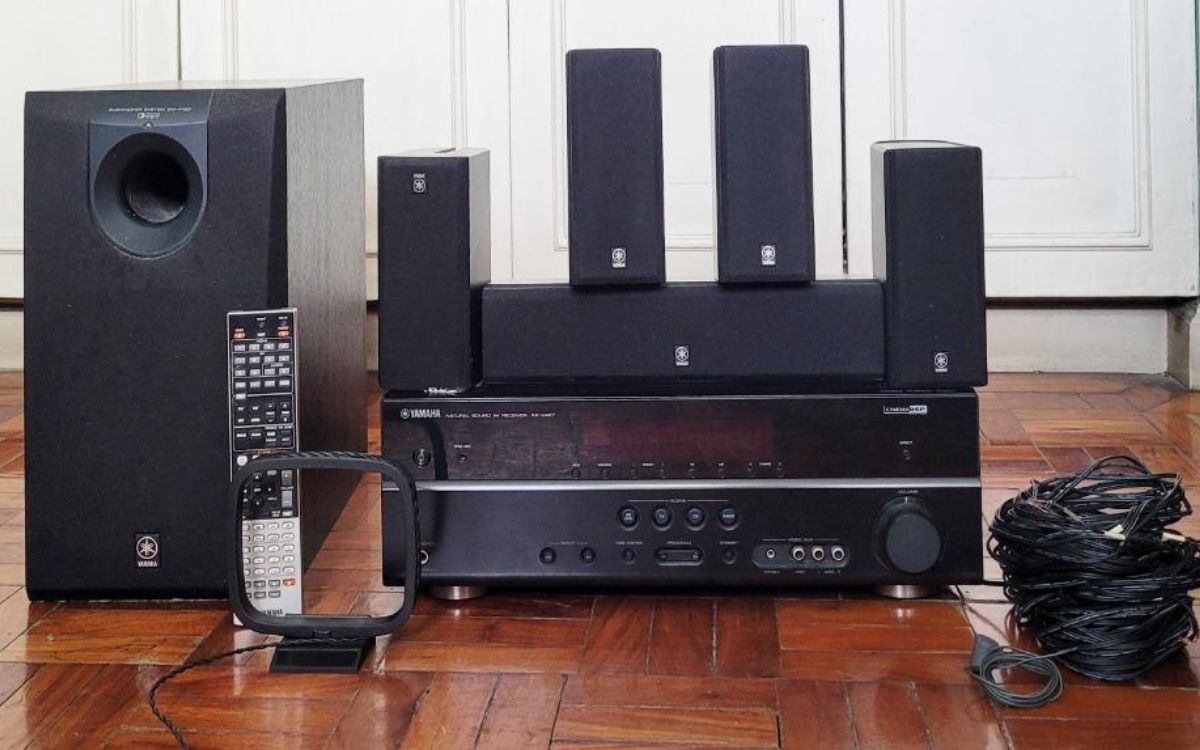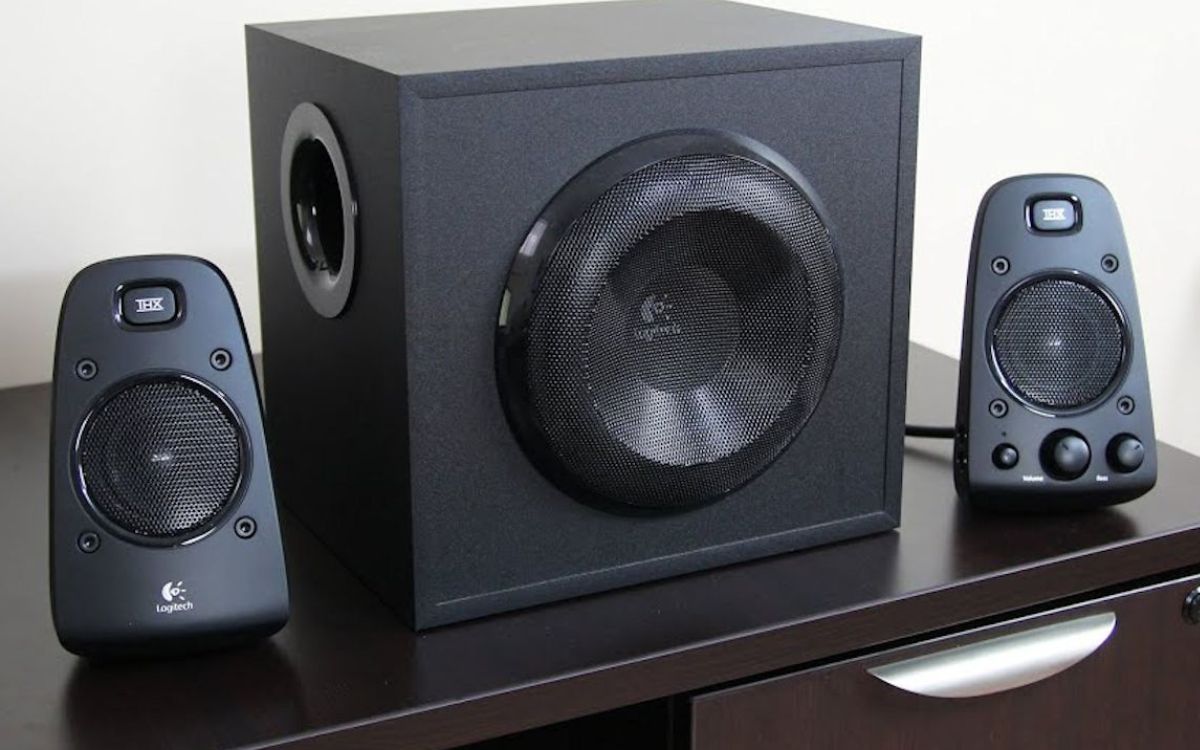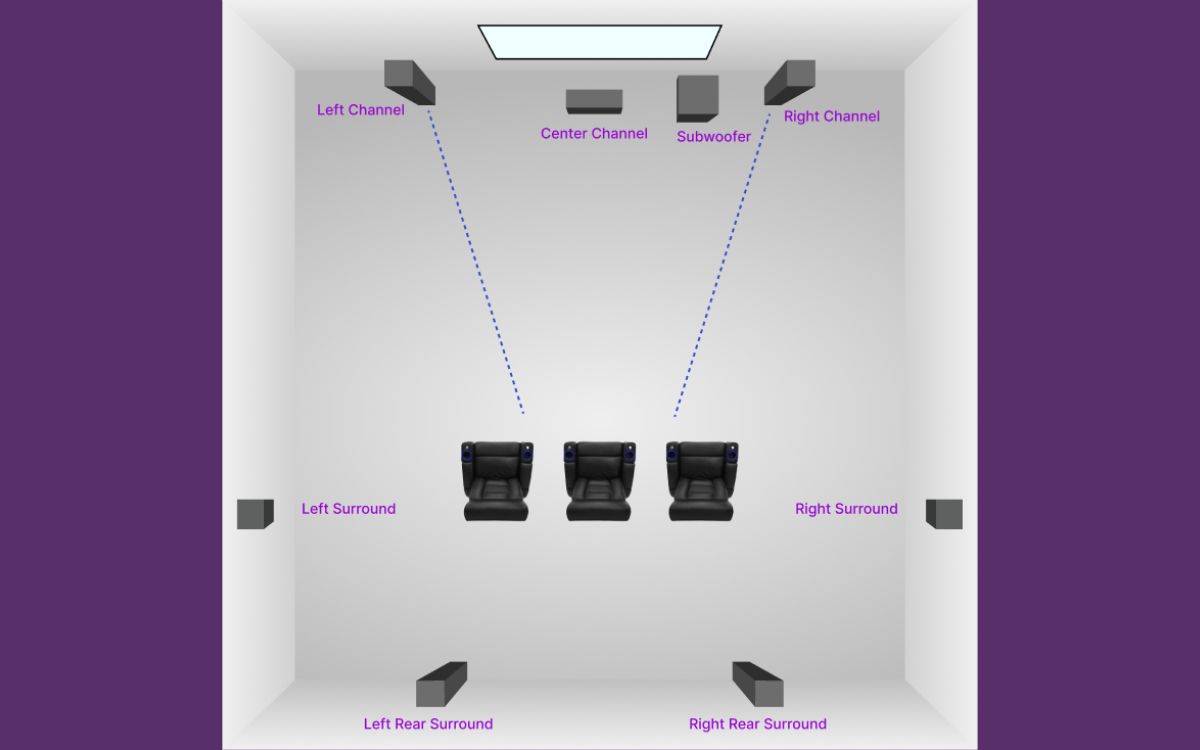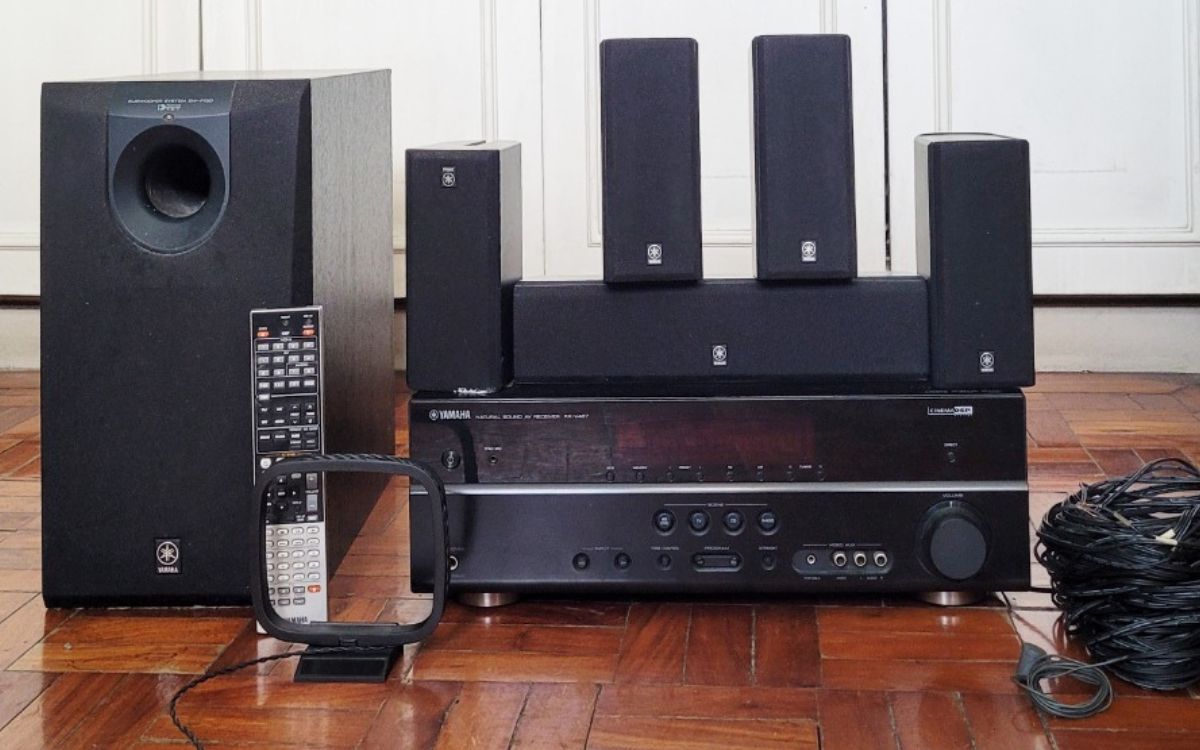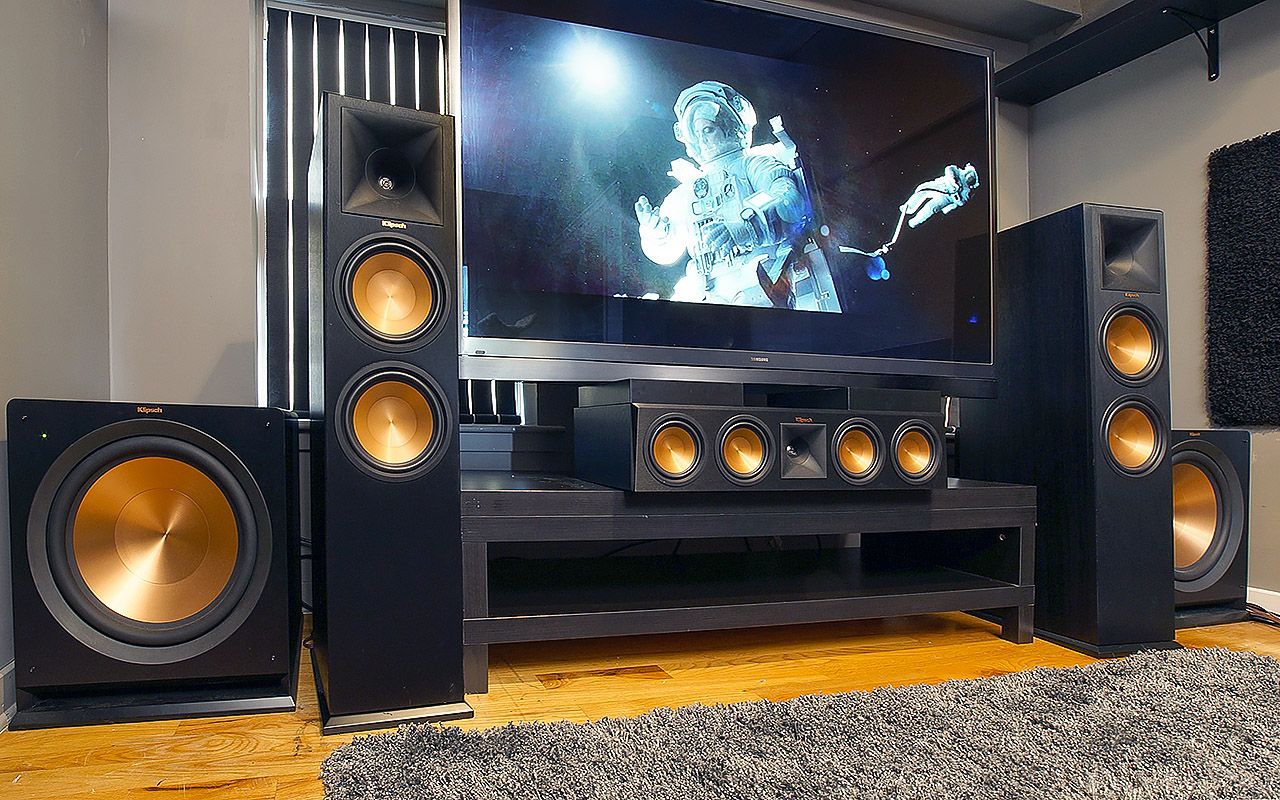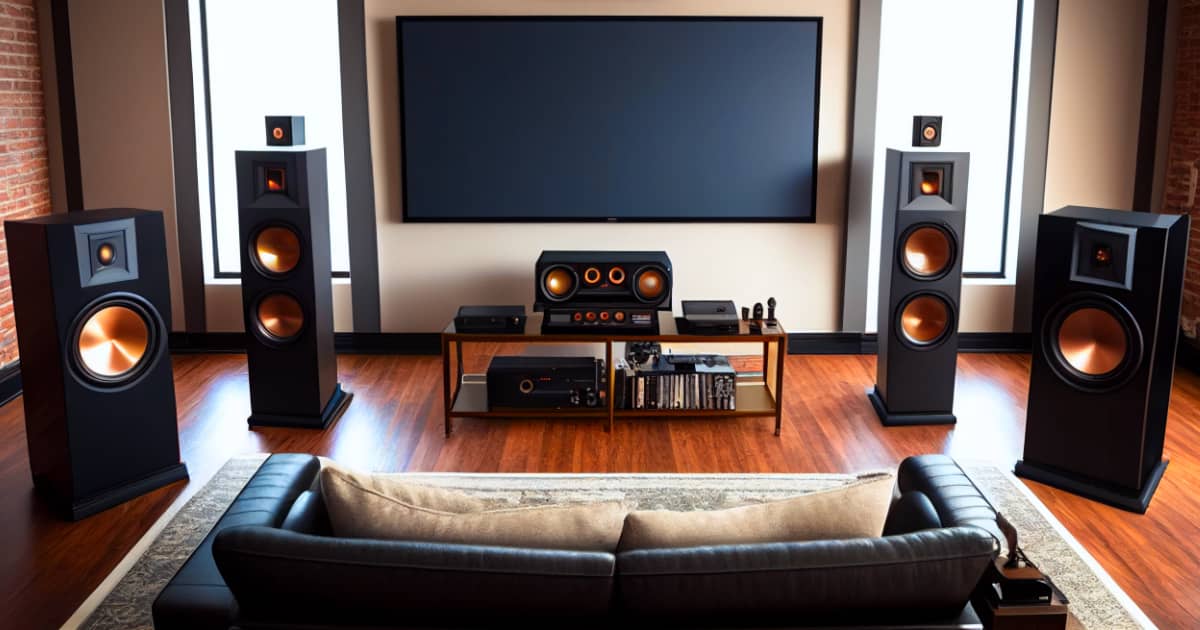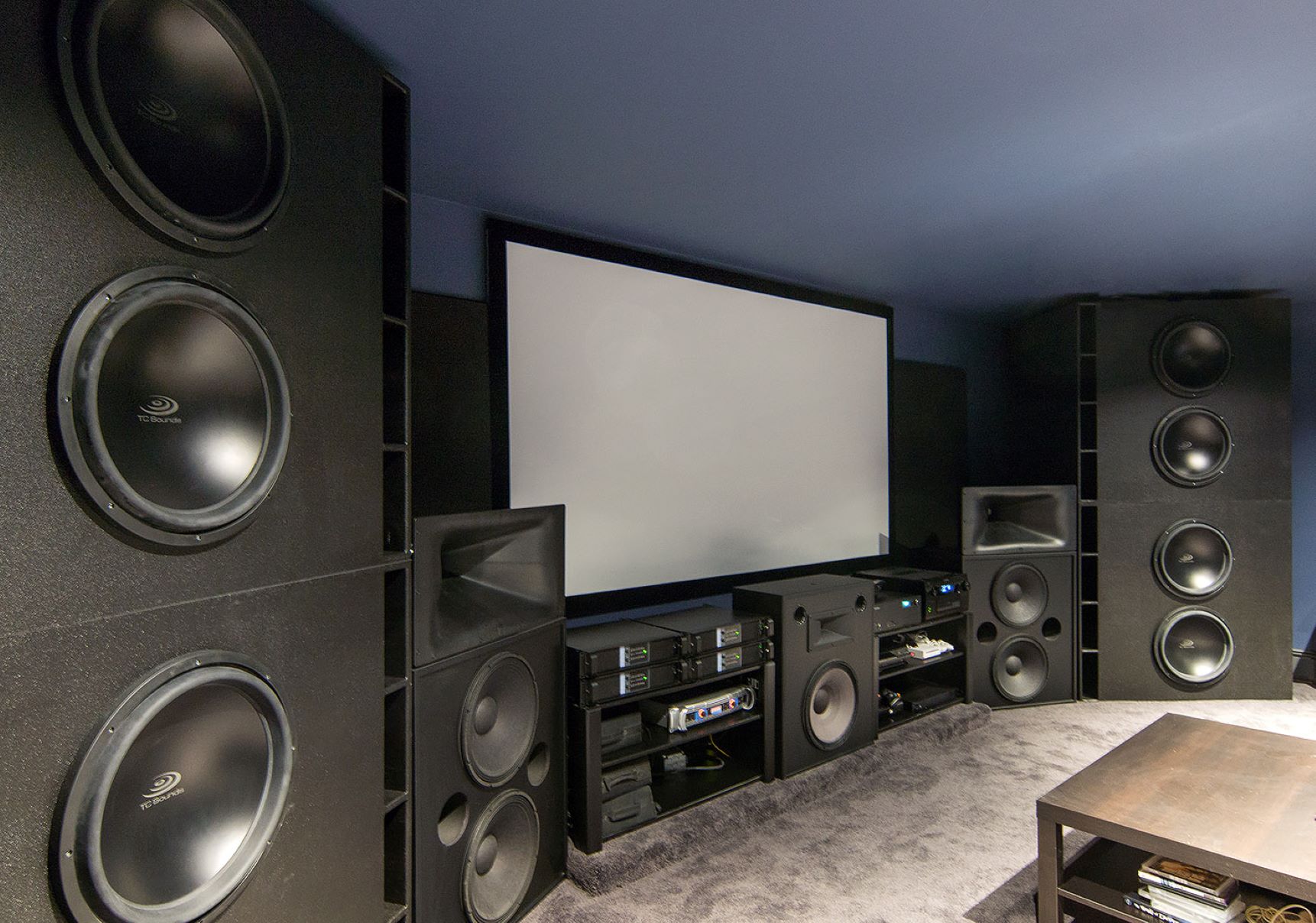Home>Production & Technology>Surround Sound>What To Look For In Surround Sound Systems
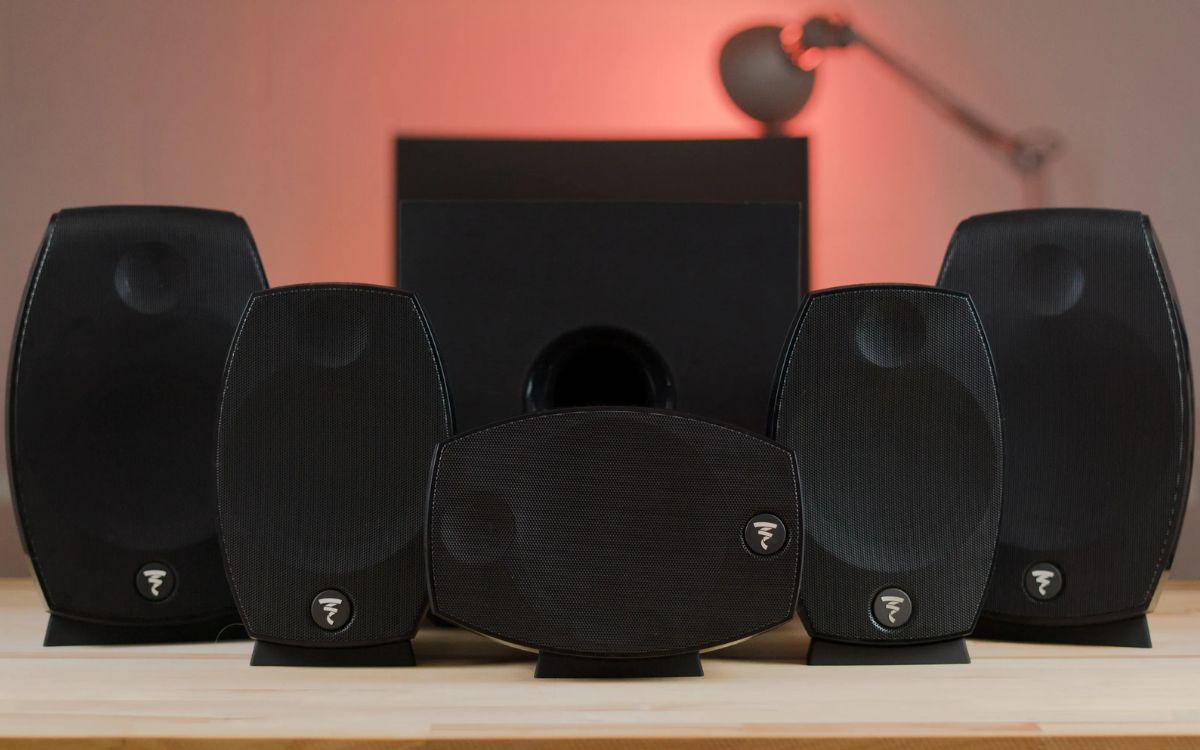

Surround Sound
What To Look For In Surround Sound Systems
Modified: January 22, 2024
Looking to upgrade your audio experience? Discover what to look for in surround sound systems and immerse yourself in high-quality sound.
(Many of the links in this article redirect to a specific reviewed product. Your purchase of these products through affiliate links helps to generate commission for AudioLover.com, at no extra cost. Learn more)
Table of Contents
Introduction
Surround sound systems have revolutionized the way we experience audio in our homes. Whether you’re a movie enthusiast, a music lover, or a gamer, a high-quality surround sound system can take your entertainment experience to the next level. By creating an immersive audio environment, surround sound systems can transport you right into the heart of the action, making you feel like you’re part of the story.
But with so many options available on the market, how do you choose the right surround sound system for your needs? In this article, we will explore the key factors to consider when selecting a surround sound system. By understanding what to look for, you can make an informed decision that will enhance your audio experience for years to come.
Before diving into the specific features and technical aspects, it’s important to have a clear understanding of your entertainment preferences and goals. Are you primarily interested in watching movies and TV shows? Or do you spend hours gaming with friends? Perhaps you prioritize music and want a system that can deliver impeccable audio quality. Defining your priorities will guide your decision-making process and help you select a system that best suits your needs.
Another aspect to consider is your budget. Surround sound systems can range in price from affordable entry-level options to high-end systems that come with a heftier price tag. It’s important to set a budget before starting your search and stick to it. This will help you narrow down your options and choose the best system within your price range.
Now that we have laid the groundwork, let’s delve into the key factors to consider when choosing a surround sound system: sound quality, speaker configuration, compatibility and connectivity, wireless or wired options, room size and placement, design and aesthetics, price range, brand reputation, and warranty and customer support.
Sound Quality
One of the most important factors to consider when selecting a surround sound system is the sound quality it delivers. After all, the primary goal of investing in such a system is to enjoy a rich and immersive audio experience.
When evaluating sound quality, there are a few key aspects to pay attention to. First and foremost, consider the frequency response of the system. This refers to the range of audio frequencies that the system can reproduce. Ideally, you want a system that can handle a wide range of frequencies, from deep bass to crisp highs, to ensure that you don’t miss out on any sonic details.
In addition to frequency response, it’s important to consider the system’s dynamic range. A wide dynamic range allows for greater contrast between the softest and loudest sounds, resulting in a more realistic and engaging audio experience. Whether you’re watching a thrilling action movie or listening to a symphony orchestra, a system with a wide dynamic range will ensure that you can fully appreciate the nuances of the audio.
Furthermore, the power output of the system is a critical factor in determining sound quality. The power output is measured in watts and indicates how loud the system can get. Higher wattage generally translates to louder and more impactful sound, especially in larger rooms. However, it’s important to note that wattage alone does not guarantee better sound quality. The overall design and engineering of the speakers, amplifiers, and signal processing also play a significant role in delivering high-quality sound.
Lastly, consider the audio formats and technologies supported by the surround sound system. Dolby Atmos and DTS:X are two popular surround sound formats that provide three-dimensional audio, adding height channels to create a more immersive soundstage. If you have access to content encoded in these formats, choosing a system that supports them can elevate your audio experience.
When it comes to sound quality, remember that personal preference plays a role. To truly assess the quality, it’s recommended to audition the system in person at a dedicated audio store or read reviews from trusted sources. Take note of the clarity, balance, and overall fidelity of the sound to determine if it meets your expectations.
By prioritizing sound quality, you can ensure that your surround sound system delivers the immersive audio experience you desire for your home entertainment setup.
Speaker Configuration
The speaker configuration is a crucial aspect to consider when choosing a surround sound system. It determines the number and placement of speakers in your setup, which directly impacts the audio experience and immersion.
The most common speaker configuration for a surround sound system is the 5.1 setup. This consists of five main speakers and one subwoofer. The main speakers include a center channel speaker for clear dialogue reproduction and two front and two rear speakers for directional audio effects. The subwoofer handles low-frequency sounds and delivers deep, rumbling bass.
For a more immersive experience, you can opt for a 7.1 or 9.1 speaker configuration. These setups add additional speakers to the mix, creating a more three-dimensional audio environment. With additional surround or height channels, you can enjoy sound effects that move around the room, further enhancing the realism and depth of your audio.
When considering the speaker configuration, it’s important to assess the size of your room. A larger room may benefit from additional speakers to ensure even sound distribution and coverage. Conversely, a smaller room may not require as many speakers to achieve a satisfactory audio experience.
Another consideration is the layout and design of your room. If your space is not conducive to installing multiple speakers, you can explore alternative options. Soundbars and soundbases are popular alternatives that offer a simplified setup while still providing a surround sound effect. These compact systems integrate multiple speakers into a single unit, reducing cable clutter and offering a more streamlined aesthetic.
Finally, consider the ability to customize and adjust the speaker configuration to suit your preferences. Some surround sound systems offer features such as speaker calibration and room correction, which optimize the audio performance based on the acoustics of your room. These features can greatly enhance the overall audio quality and ensure that every speaker is working together harmoniously.
Ultimately, the speaker configuration should align with your audio preferences, room size, and layout. It’s important to strike a balance between the number of speakers and the practicality of installation to create an optimal surround sound experience for your specific space.
Compatibility and Connectivity
When selecting a surround sound system, it’s crucial to consider its compatibility and connectivity options. You want a system that can seamlessly integrate with your existing devices and audio sources.
First and foremost, check the compatibility of the surround sound system with your television or media player. Ensure that the system can receive audio signals from these devices and that they are compatible in terms of audio formats and connections. Look for HDMI ARC (Audio Return Channel) support, as it allows for a single HDMI cable to transmit both audio and video signals between your TV and sound system.
Additionally, consider the connectivity options of the surround sound system. Look for multiple input options such as HDMI, optical, and analog connections to accommodate a variety of devices. This will allow you to connect your Blu-ray player, gaming console, streaming devices, and more, ensuring that you can enjoy immersive audio from all of your entertainment sources.
Wireless connectivity is another convenience to consider. Some surround sound systems offer wireless connectivity options for the rear speakers, eliminating the need for running cables across the room. This makes installation easier and provides more flexibility in speaker placement. However, keep in mind that wireless systems may have limitations in terms of range and potential interference.
Another aspect to consider for compatibility and connectivity is the availability of streaming options. Many modern surround sound systems offer built-in streaming capabilities, allowing you to connect to popular streaming services such as Spotify, Pandora, or Apple Music. This provides a convenient way to access your favorite music directly from the sound system.
Moreover, ensure that the surround sound system can support the audio formats you frequently encounter. This includes common formats like Dolby Digital and DTS, as well as newer formats like Dolby Atmos and DTS:X. Having support for these formats ensures that you can fully enjoy the immersive audio experience that these technologies offer.
Lastly, consider any additional features or compatibility with smart home ecosystems that may be important to you. If you already have a smart home setup, look for a surround sound system that is compatible with your existing ecosystem, such as Amazon Alexa or Google Assistant. This allows for convenient voice control and integration with other smart devices in your home.
By carefully assessing the compatibility and connectivity options, you can ensure a seamless integration of the surround sound system with your existing devices and enjoy a hassle-free audio experience.
Wireless or Wired Options
When considering a surround sound system, one important decision to make is whether to opt for wireless or wired options. Both have their advantages and considerations, and it’s important to weigh them based on your specific needs and preferences.
Wireless surround sound systems offer the advantage of flexibility and convenience. With wireless connectivity, you can avoid the hassle of running speaker cables across the room, giving you more freedom in terms of speaker placement. This is particularly beneficial if you have limited options for hiding or routing cables in your space. Wireless systems typically use either Wi-Fi or Bluetooth connections to transmit audio signals from the main sound system to the rear speakers, creating a clean and clutter-free setup.
Another benefit of wireless systems is the ease of installation. Setting up a wireless surround sound system typically involves fewer steps and eliminates the need for complex cable management. This makes it more accessible for those who are new to audio setups or prefer a simple and straightforward installation process.
However, it’s important to note that wireless surround sound systems may have limitations when it comes to range and potential interference. The signal strength can be affected by the distance between the main system and the rear speakers, as well as any obstacles or interference in the room. It’s essential to consider the size and layout of your space to ensure that the wireless signal can reach all the speakers effectively.
On the other hand, wired surround sound systems offer a robust and reliable connection. By using dedicated speaker cables, wired systems ensure stable audio transmission without the risk of signal loss or interference. This is particularly important for larger rooms or setups that require longer cable runs. Additionally, wired systems may provide higher audio fidelity and consistent performance compared to wireless options.
However, it’s important to consider the practicality and aesthetics of running speaker cables. This may involve drilling holes in walls, concealing cables in cable management systems, or using cable raceways to ensure a clean and organized look. Careful planning and consideration of your room’s layout and design can help mitigate any potential cable management challenges.
In summary, the choice between wireless and wired options ultimately depends on your specific needs and preferences. If convenience and flexibility are important to you, wireless systems may be the way to go. On the other hand, if you prioritize a reliable and consistent connection, wired systems may be a better fit. Consider the size and layout of your space, the level of installation complexity you’re comfortable with, and whether avoiding visible cables is a priority.
By weighing the pros and cons of wireless and wired surround sound systems, you can make an informed decision that aligns with your audio requirements and the aesthetics of your home.
Room Size and Placement
The size and layout of your room play a significant role in determining the effectiveness and performance of your surround sound system. Understanding how these factors influence audio distribution and speaker placement is crucial when selecting the right system.
First and foremost, consider the size of your room. Larger rooms generally require more powerful speakers to fill the space with sound effectively. A system with higher power output and larger speaker drivers will provide the necessary volume and dispersion to create an immersive audio experience. On the other hand, smaller rooms may not require as much power, and a compact system can provide sufficient coverage.
Additionally, room acoustics should be taken into account. Rooms with hard surfaces like tile floors, glass windows, and bare walls tend to create more reflections, leading to a less balanced and muddier sound. In such cases, it may be beneficial to explore acoustic treatments like rugs, curtains, and sound-absorbing panels to improve the overall sound quality and clarity.
Speaker placement is another crucial consideration. The position of the speakers in relation to the listening area greatly impacts the surround sound experience. For a typical 5.1 setup, the center channel speaker should be placed directly above or below the television to ensure clear dialogue reproduction. The front left and right speakers should be equidistant from the center speaker and angled towards the listening area. The rear or surround speakers should be placed to the sides or slightly behind the listening area for optimal surround effects.
In a 7.1 or 9.1 setup, additional speakers are added to create a more immersive soundstage. The surround speakers can be placed on the side walls, while the additional rear speakers are placed behind the listening area. Height speakers for formats like Dolby Atmos can be mounted on the ceiling or placed on top of floor-standing speakers for a three-dimensional audio experience.
In some cases, achieving optimal speaker placement may be challenging due to room layout or furniture arrangement. In such situations, consider using tools like speaker stands, wall mounts, or ceiling brackets to position the speakers correctly. It’s worth noting that some systems offer speaker calibration tools that can optimize the audio performance based on the room’s acoustics and speaker placement.
To determine the ideal speaker placement and configuration for your specific room, you can consult professional installers or refer to the manufacturer’s guidelines. Additionally, experimenting with different speaker placements and angles while fine-tuning the audio settings can help achieve the best surround sound experience.
By taking into consideration the size and acoustics of your room, as well as optimizing the placement of your speakers, you can ensure that your surround sound system performs at its best and delivers an immersive audio experience for your entertainment enjoyment.
Design and Aesthetics
While the performance and functionality of a surround sound system are crucial, it’s also important to consider the design and aesthetics of the system, as it will be a prominent feature in your living space.
The design of the surround sound system should complement the style and decor of your room. Look for systems that offer a sleek and modern design, with clean lines and a visually appealing appearance. Many manufacturers offer a variety of finishes, such as black or white, to seamlessly blend with your existing furniture and decor.
Consider the size of the speakers and the main unit. Ensure that they are proportionate to your room and won’t overwhelm the space. Compact and slim speakers are ideal for smaller rooms or for those who prefer a minimalist aesthetic. On the other hand, larger floor-standing speakers can make a bold statement in a larger space.
In addition to the physical design, consider the placement of the speakers and how they integrate into your room. Some systems offer wall-mounted or ceiling-mounted options, allowing for a more discreet installation that doesn’t take up floor space. If you prefer a cleaner look, wireless systems with hidden cables can help maintain a clutter-free environment.
When it comes to the control interface, consider systems that offer user-friendly and intuitive controls. This can include physical buttons, touch panels, or even smartphone apps for convenient control and customization. A well-designed and intuitive control interface enhances the overall user experience.
Another factor to consider is the system’s compatibility with your existing audio setup. If you have other audio devices or speakers in your room, ensure that the surround sound system can seamlessly integrate with them. This allows for a cohesive and unified audio system that can be controlled from a central point.
Lastly, consider the overall build quality and durability of the surround sound system. Look for systems that are constructed with high-quality materials to ensure long-term reliability and performance. Reading customer reviews and checking for warranty information can provide insights into the system’s durability and after-sales support.
While the design and aesthetics of a surround sound system are subjective, it’s essential to choose a system that not only performs well but also adds to the overall visual appeal of your entertainment space. By considering the design, size, placement, and control interface of the system, you can find a surround sound system that seamlessly integrates into your room and enhances both the audio experience and aesthetic ambiance.
Price Range
When shopping for a surround sound system, one crucial factor to consider is the price range that aligns with your budget. Surround sound systems can vary significantly in price, offering options for every budget and level of audio enthusiast.
Before starting your search, it’s important to determine the maximum amount you are willing to spend on a surround sound system. Setting a budget will help you narrow down your options and avoid overspending on unnecessary features.
Entry-level surround sound systems typically start at a more affordable price point. These systems offer decent sound quality and basic functionality, making them suitable for casual viewing and listening. While they may not have all the high-end features or the same level of audio fidelity as more expensive options, they can still provide an enjoyable audio experience for those on a tight budget.
Mid-range surround sound systems offer a balance between price and performance. These systems typically provide improved sound quality, more advanced features, and greater connectivity options. Whether you’re a movie enthusiast, a music lover, or a gamer, a mid-range system can deliver immersive audio and cater to a variety of entertainment needs.
At the high end of the price range, you’ll find premium surround sound systems with top-notch performance and cutting-edge technology. These systems often boast superior sound quality, support for advanced audio formats like Dolby Atmos and DTS:X, and premium materials for a luxurious aesthetic. They may also include additional features like room calibration and customization options. High-end systems are ideal for those who demand the best audio experience and have a larger budget to invest in their home entertainment setup.
While it can be tempting to go for the most expensive option available, it’s important to consider whether the additional features and performance justify the higher price. Assess your specific needs and usage patterns to determine the level of audio quality and functionality you truly require.
It’s worth noting that sales, discounts, or promotional offers may be available for surround sound systems. Keep an eye out for these opportunities, as they can provide significant cost savings without compromising on the quality of the system.
Lastly, read reviews and compare prices from different retailers to ensure you are getting the best value for your money. Don’t forget to check for warranty information, as a longer warranty can provide peace of mind and protection for your investment.
By carefully considering your budget and comparing the features and performance offered within different price ranges, you can find a surround sound system that strikes the right balance between cost and quality, bringing your entertainment experience to new heights.
Brand Reputation
When investing in a surround sound system, considering the brand reputation is an important factor to ensure the quality and reliability of your purchase. Brand reputation reflects the trust and reputation that a company has built over time through its products, customer satisfaction, and overall reputation in the industry.
Well-established and reputable brands in the audio industry have often gained recognition for consistently producing high-quality products and providing excellent customer support. These brands have invested in research and development, ensuring that their surround sound systems meet or exceed industry standards and deliver exceptional performance.
A reputable brand not only signifies quality but also implies a commitment to customer satisfaction. Brands with a good reputation tend to have a higher level of customer service, offering assistance, technical support, and warranty coverage if any issues arise with your surround sound system. This can provide peace of mind and assurance that you will receive proper support when needed.
One way to evaluate a brand’s reputation is by researching online reviews and customer feedback. Read reviews from reliable sources and listen to the experiences of other consumers who have purchased and used the surround sound system you are considering. Look for consistent positive feedback, as well as any recurring issues or negative experiences that could signal potential problems.
Another indication of a brand’s reputation is its presence and recognition in the audio industry. Established brands often have won awards and have a track record of innovation and excellence. Look for brands that are recognized by industry experts and trusted publications for their superior products and contributions to the audio industry.
While brand reputation is important, it’s worth mentioning that there are also lesser-known brands that offer great performance and value for money. These brands may not have the same level of recognition as more established ones, but they can still provide high-quality surround sound systems at more affordable prices. In such cases, reading reviews and researching the brand’s reputation becomes even more crucial to ensure a positive experience.
Ultimately, the brand reputation should be considered alongside other factors, such as sound quality, features, price, and compatibility with your needs. It’s important to strike a balance between reputable brands and the specific features and performance you desire from your surround sound system.
By choosing a surround sound system from a reputable brand with positive customer reviews and industry recognition, you can increase the likelihood of investing in a high-quality product that will provide a satisfying audio experience and long-term reliability.
Warranty and Customer Support
When purchasing a surround sound system, it’s essential to consider the warranty and customer support offered by the manufacturer. This ensures that you are protected against any potential defects or issues that may arise with your system and that you have access to assistance and support if needed.
Warranty coverage is an important aspect to consider. A warranty provides peace of mind and shows the manufacturer’s confidence in the quality and reliability of their product. Look for a surround sound system that offers a comprehensive warranty, covering both parts and labor. This means that if any components fail or there are manufacturing defects, the manufacturer will repair or replace them at no additional cost to you. A longer warranty period also indicates the manufacturer’s commitment to customer satisfaction.
It’s important to review the warranty terms and conditions to understand what is covered and any specific requirements or limitations. Pay attention to factors such as the duration of the warranty, whether it applies to all components or only specific parts, and any procedures or steps that need to be followed in the event of a claim.
Customer support is another vital aspect to consider. A knowledgeable and responsive customer support team can make a significant difference in your overall experience with a surround sound system. Look for manufacturers that offer various channels of communication such as phone, email, or live chat, allowing you to easily reach out to them for assistance or inquiries.
Research customer reviews and experiences to gain insights into the level of customer support provided by the manufacturer. Positive customer experiences, prompt response times, and knowledgeable support staff are indicators of good customer support. On the other hand, consistent negative feedback or difficulties in reaching customer support can be red flags and indicate potential frustrations should you encounter any issues with your system.
It’s also worth noting that some manufacturers offer extended warranties or additional support options for an extra cost. These can provide additional coverage or benefits beyond the standard warranty, such as expedited service or advanced troubleshooting. Assess whether these options align with your needs and budget.
Purchasing from authorized retailers or reputable sellers is another way to ensure that you have access to warranty coverage and reliable customer support. It’s advisable to avoid buying from unauthorized sellers, as they may not provide the same level of warranty protection or support.
Considering the warranty and customer support offered by the manufacturer is crucial for a worry-free ownership experience and can provide valuable assistance in the event of any issues with your surround sound system. Taking the time to research warranty coverage, customer feedback, and support options will help you make an informed decision and ensure a smooth and satisfying experience with your new audio setup.
Conclusion
Choosing the right surround sound system is an important decision that can greatly enhance your audio experience at home. By considering the factors discussed in this article, you can make an informed decision and ensure that the system you select aligns with your needs and preferences.
Sound quality is paramount, so look for a system that delivers a wide frequency response, a wide dynamic range, and ample power output. Consider the speaker configuration that best suits your room and desired level of immersion, whether it’s a 5.1, 7.1, or 9.1 setup.
Compatibility and connectivity are crucial, so ensure that the system can integrate seamlessly with your existing devices and audio sources. Wireless or wired options should also be evaluated based on the practicality, range, and interference considerations in your room.
Take into account the size and layout of your room, as well as the placement of speakers, to optimize the audio distribution and create an immersive soundstage. Consider the design and aesthetics of the system, ensuring that it complements your room’s style and furnishings.
Price range should align with your budget, and brand reputation should be considered to ensure quality, reliable products, and exceptional customer support. Lastly, review the warranty coverage and customer support offered by the manufacturer to protect your investment and have peace of mind.
It’s essential to strike a balance between audio performance, practicality, budget, and personal preferences when selecting a surround sound system. Ultimately, the right system will provide an immersive and enjoyable audio experience, allowing you to fully immerse yourself in your favorite movies, music, and games.
By taking the time to research and consider these factors, you can choose a surround sound system that will bring your entertainment to life, transforming your home into a captivating audio haven.

